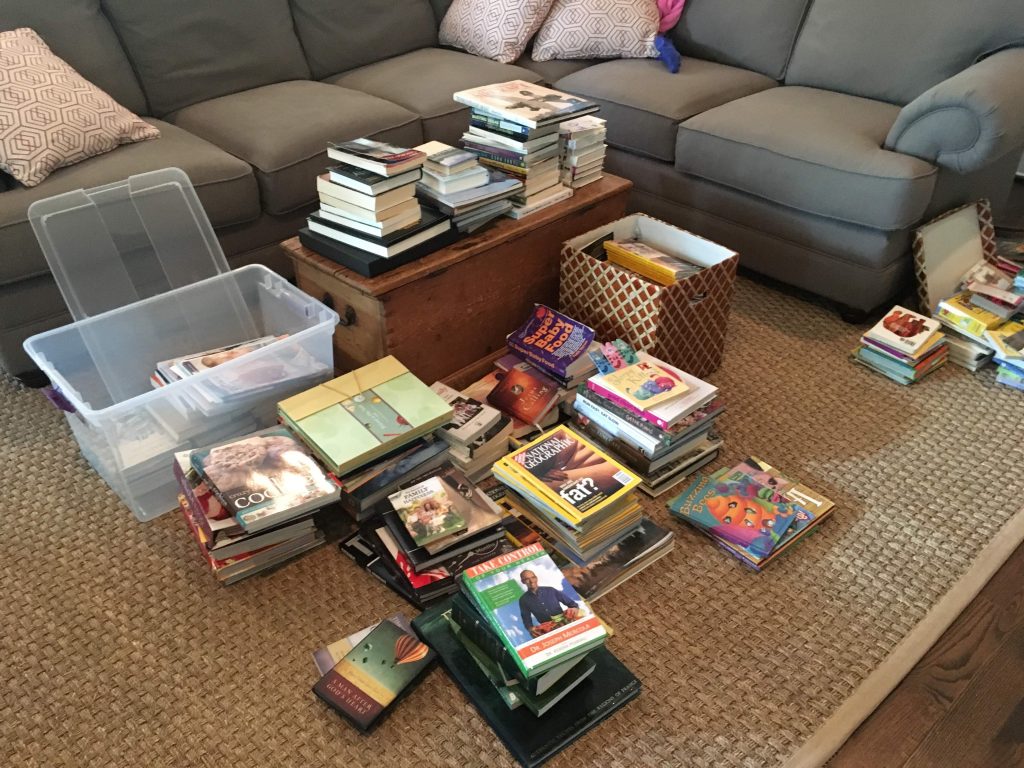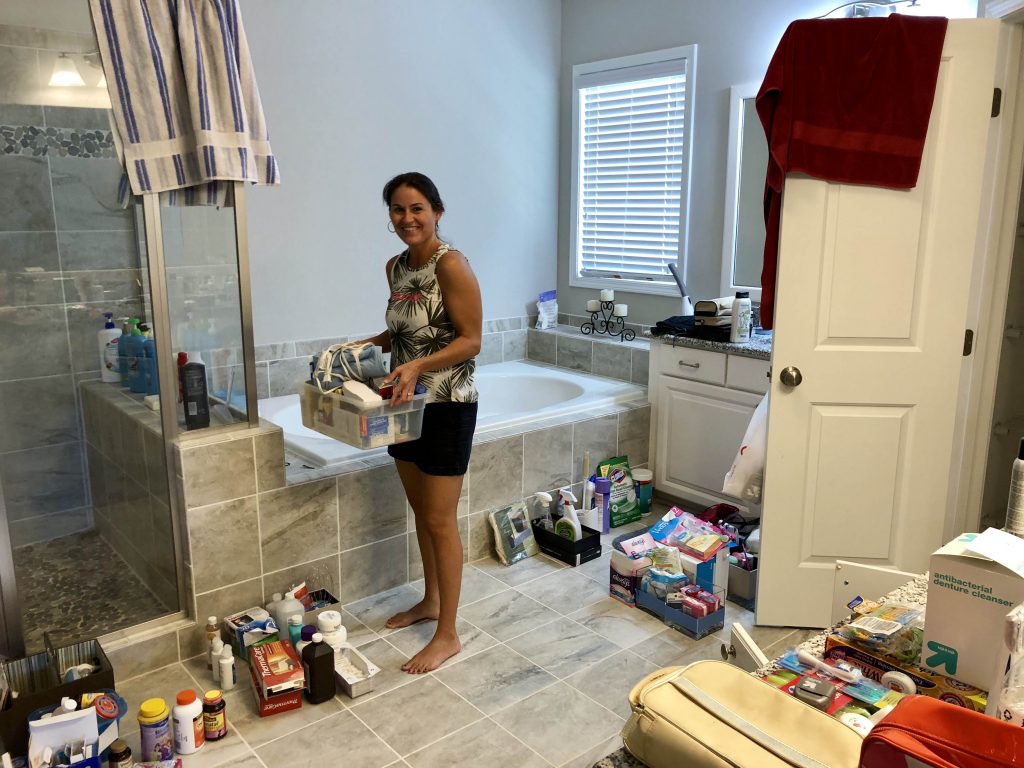
Last Updated on September 8, 2022
If clutter is taking over your home, and you want to adopt the less is more philosophy, you may want to approach spring cleaning with the The Konmari Method™, by Marie Kondo.
Who is Marie Kondo?
In 2019, Marie Kondo soared to stardom through the Netflix hit Tidying Up with Marie Kondo and #KonMari was a trending topic on social media for months. Years before her hit show, the Japanese author wrote a couple of best selling books, The Life Changing Magic of Tidying and Spark Joy, which both discuss the philosophy of keeping only those items that Spark Joy.
What is the KonMari Method?
Kondo’s magical system, which she has coined, The Konmari Method™ is the state of mind which encourages people to give thanks to their belongings before discarding them. Through this method of tidying, we can cherish and find a place for the things we love, and let go of the items that no longer Spark Joy.
People are drawn to this philosophy not only because of its effectiveness, but also because it places great importance on being mindful, introspective and forward-looking, according to Kondo.
There are 6 Key Elements behind the famous KonMari Method: Commit yourself to tidying up.
- Commit yourself to tidying up.
The first step to getting organized is to make the decision to tidy once and for all. - Imagine your ideal lifestyle.
Once you have committed to tidying, it’s important to visualize what you want your home to look and feel like when you have completed tidying. What is the end goal? What is going to bring you joy? - Finish discarding first.
Be sure to discard all items that no longer bring you joy; before finding a permanent home for the items you love. Before letting go of items, sincerely thank each item for serving its purpose. - Tidy by category, not location.
There are 5 categories: clothing, books, papers, komono (misc. items) and sentimental. - Follow the right order.
It’s important to go in this order from easiest (clothing) to let go of to the most difficult (sentimental items). - Ask yourself if it Sparks Joy.
Instead of focusing on what needs to be discarded, focus your energy on what brings you joy. Do this by holding each item in your hand and ask yourself, “Does this Spark Joy? Do I use this item? What is the purpose of this item? If it no longer brings you joy, it’s time to let it go.”
Need help Tidying Up?
Local Marie Kondo representative, Shannon Huneycutt of Spark Joy Charlotte, works Tidying Up magic around the Charlotte area. Below, she helps us dive deeper into The Konmari Method™ through her experience as a Silver Level Consultant.
Tackling by categories
We typically tackle cleaning and clutter room-by-room, but Kondo recommends category-by-category.
“A key component of the KonMari Method™ is pulling that category in one spot and working through these categories in the following order,” said Huneycutt.
The first category is clothes
The philosophy behind the KonMari Method™ when working through the clothing category is about finding the items that still bring you joy. You’ll want to gather all of them in one location – typically on the bed – and hold each item in your hand, and ask yourself: “Does it Spark Joy? Do I love it? Do I still wear it? Does it make me feel good?”
If you don’t have that magical feeling about that item, it’s time to let it go. A lot of people hold onto clothing thinking that they will one day fit into it again, then hold on to it for years, taking up space in your closet. Huneycutt says “it’s time to let those things go! It’s time to have a wardrobe to make you feel good right now!”
She said, “Clothing that makes you feel guilty is not leading a life that sparks joy for you. Go out and buy something that makes you feel good right now.”
Next up is Books

Books may not seem as overwhelming of a category as clothing but the challenging part is it can become time consuming especially if you’re someone who has a library of books.
Huneycutt said her clients try to give the book a look over, and get stuck looking through them and re-reading passages. Her recommendation is to quickly look at the cover, back and inside, find any sentimental or special messages inside the book. Then ask yourself: “Does it bring me joy? Do I want to read this book again? Why is it taking up space on my shelf? Does it bring me joy just by looking at it? Does this item support the lifestyle I’m envisioning?”
Following books, tackle papers
Huneycutt said this category is simple. You either need it or you don’t. There are only so many permanent papers that you need. If it’s temporary, toss once handled. The paper challenge is that a lot of people hold onto papers thinking “what if I need this?” Instead, scan it and save it as a digital file.
Next you’ll tackle the bathroom, kitchen and garage

Komono means “misc. items” in Japanese, and the most challenging areas of the home where you’ll find the most clutter are the bathroom, kitchen and garage. Huneycutt said that when you’re going through Komono in the bathroom, for example, to pull together all of your medicine, toiletries, makeup, etc. Take everything out and make piles. It’s difficult to get rid of sometimes because you see money wasted on expensive makeup and skincare products that didn’t work and were not used. This is where the lightbulb pops on for some people and they’re able to change their future buying habits for the future to keep clutter out of their life.
For many people, another challenging area is the garage, but if these things are not special enough to be inside the home, they don’t mean that much to you. You have things you actually use within reach and eyesight. If every storage space is utilized in the house, and it makes its way to the garage (outside of holiday decorations or outdoor items, of course) you no longer love those things. “We don’t put things we love outside,” said Huneycutt.
Kondo left the most difficult category for last – sentimental.
You can’t save everything so for this category, you’ll have to dig deep to figure out each item’s significance and value to you. Huneycutt recommends to only hold onto sentimental things if it’s sentimental to you. Do not hold onto things for your children, thinking they will want it later in life. Most likely, they will not want these things when they’re older. It’s recommended to prioritize what’s special to your kids based on something they will want when they’re grown. They don’t want baby clothes or shoes but if you want to keep some items, choose a special outfit, their baby blanket, favorite books or toys. Keeping one tub of special things per child is plenty.
How do I find a local KonMari Representative?
While Tidying Up doesn’t promise a picture perfect lifestyle, you will be receiving more space for the items you love that do Spark Joy. If your space is no longer bringing you joy, consider contacting Shannon Huneycutt thru her website Spark Joy Charlotte . She will help you discover why it’s not making you happy. You can also follow her on facebook or instagram @sparkjoycharlotte.
If you’re not in the greater Charlotte area, you can search for a consultant near you by clicking here: https://shop.konmari.com/pages/consultants



